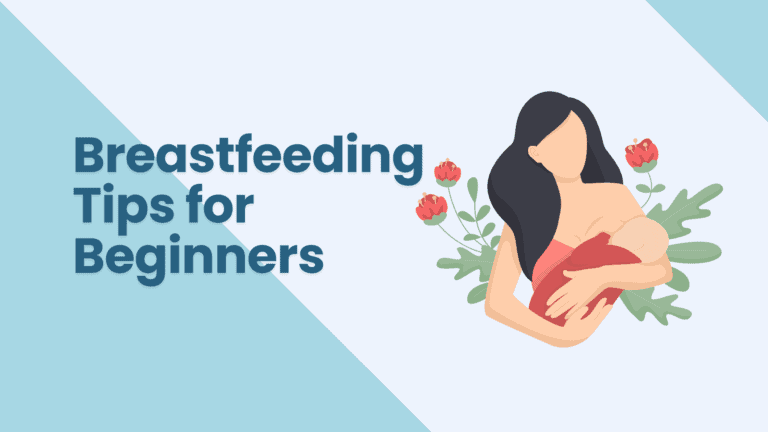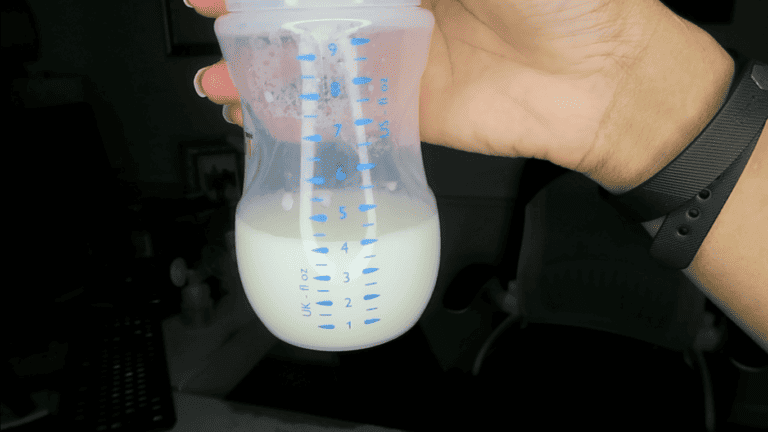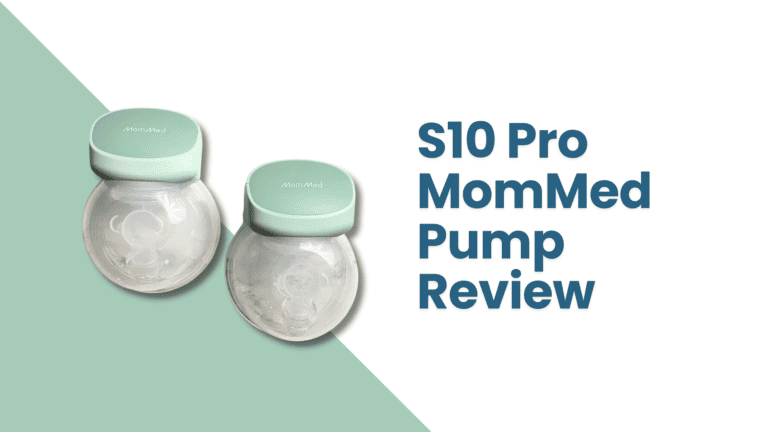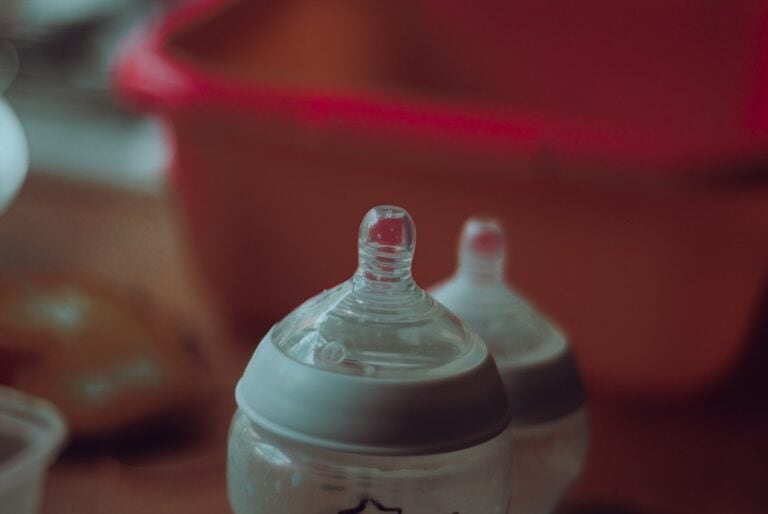How to Burp a Sleeping Baby – A Step-by-Step Guide
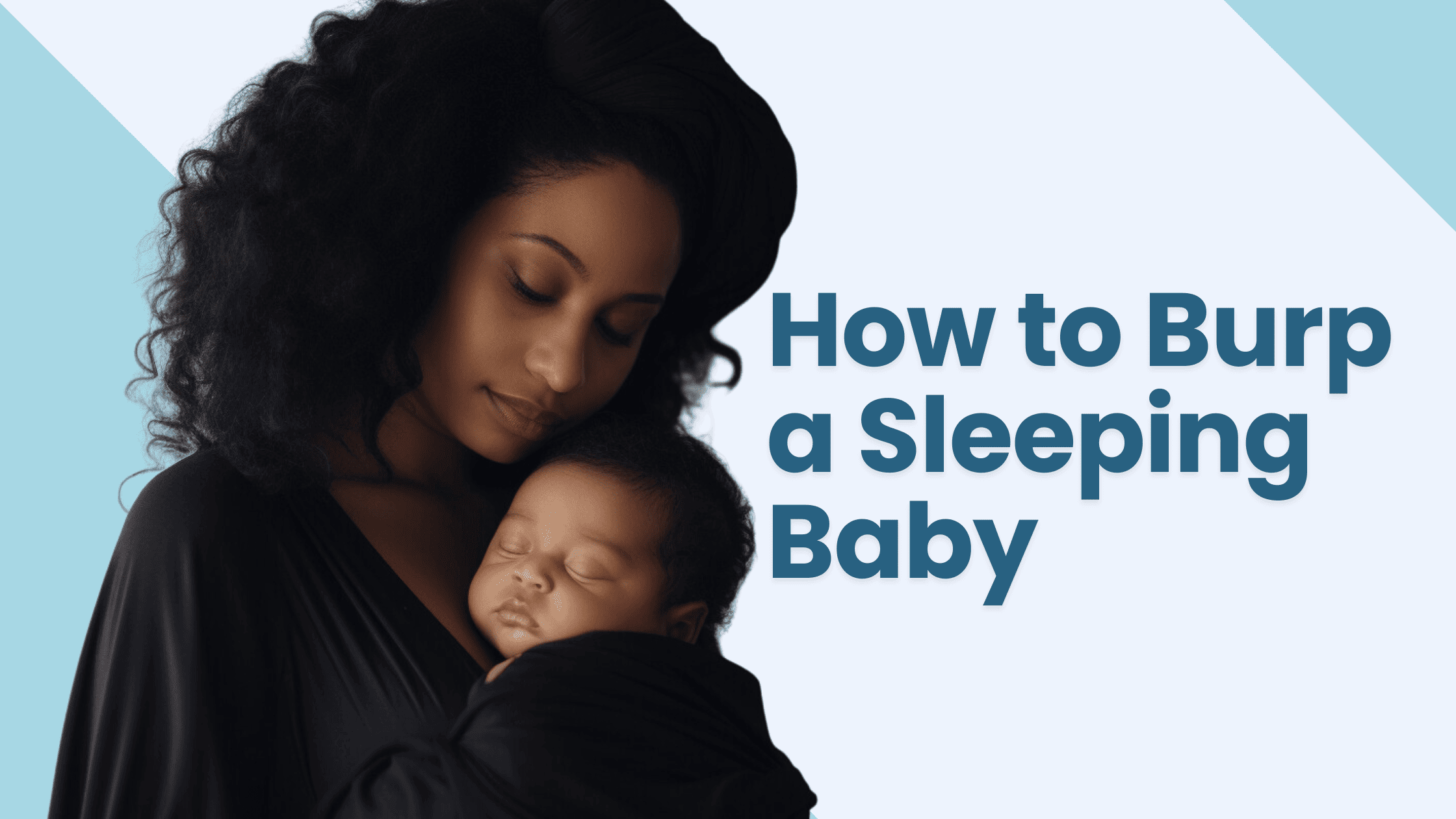
Last Updated on October 9, 2023 by Avi Steen
Your little one has finally dozed off after hours of nonstop fussiness, but you know they still need to be burped. The challenge?
Burping them without waking them up.
As a parent, you understand that “how to burp a sleeping baby” is essential for their comfort. But how do you do it effectively without disturbing their slumber?
Well, I’ve got your back, mama!
This article will walk you through the importance of knowing how to burp a sleeping baby, various techniques to do it, and tips for bottle feeding and breastfeeding to minimize gas build-up.
So, let’s dive right in!
Key Takeaways
- Burping a sleeping baby is important for releasing trapped gas and avoiding discomfort.
- Experiment with different techniques to discover the best way to burp your baby without disturbing them.
- Observe your baby’s cues and adjust your burping routine as they may no longer need it once they are 4-6 months old.
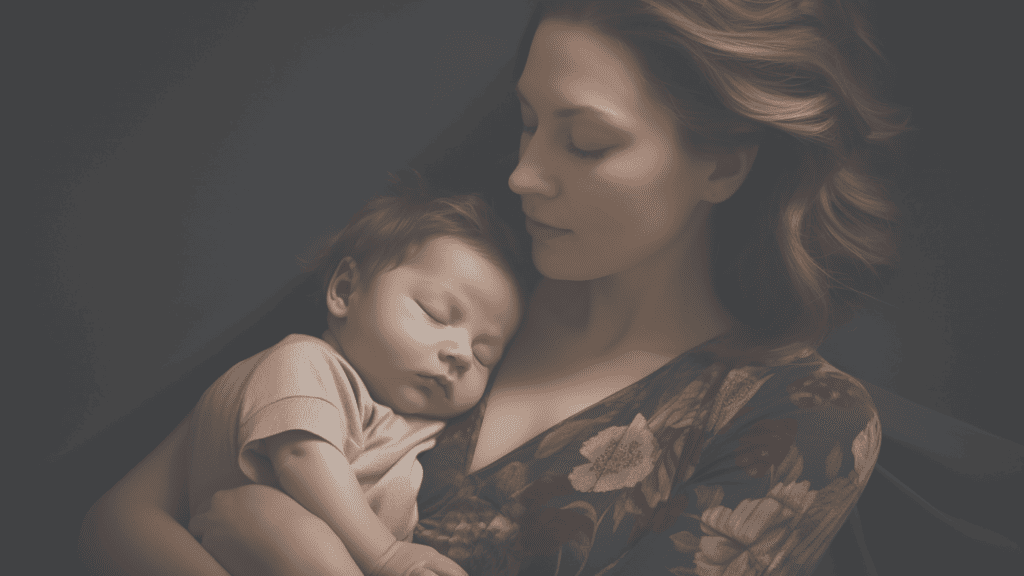
The Importance of Burping a Sleeping Baby
To avoid discomfort, gas build-up, and to promote better sleep, burping a sleeping baby is necessary. Burping should be attempted, even if your baby falls asleep during feeding.
Why?
Because baby burps help release trapped gas and prevent discomfort.
It is not advisable to let your baby sleep without burping. In fact, holding your baby’s head in an upright position while burping can help make air travel more comfortable for them.
Now that you know why it’s so important, we’ll dive into how burping a sleeping baby can help your little one sleep more comfortably.
Preventing Discomfort and Gas Build-Up
Burping a baby helps release trapped gas, such as gas bubbles, in the baby’s stomach, preventing discomfort and potential wake-ups.
Babies can get gassy for lots of reasons:
- swallowing air while they eat
- having an immature digestive system
- and crying a lot
When you help your baby burp, you are releasing any trapped gas in their stomach, which can cause discomfort and wake-ups.
So, burping can keep them more comfortable and prevent potential wake-ups so you can get some much-needed sleep.
Promoting Better Sleep for You and Baby
Getting your baby to burp can help babies sleep longer and more comfortably.
Which means you also get some rest.
Burping helps babies release gas and air that they swallow while feeding, whether they are breastfed babies or bottle-fed. This can help avoid discomfort, colic, and reflux, allowing them to have a more comfortable sleep.
By burping, the excess air is released from the baby’s tummy, allowing them to rest more peacefully. It also eliminates feelings of fullness and helps them stay asleep for longer
This provides them with comfort and prevents them from waking up too soon.

Techniques for Burping a Sleeping Baby
Various techniques can be used to burp a sleeping baby without waking them up. Try each technique to discover what works best for you and your baby.
Some parents find success with the upright hold and gentle patting, while others prefer the “sloth hold” and rocking technique or laying their baby across their lap.
Finding the right technique for your baby will not only help them but also ensure that they remain asleep and comfortable throughout the process.
So, let’s explore these techniques in detail and learn how to burp a sleeping baby effectively.
Upright Hold and Gentle Patting
Holding your baby upright and giving their back a gentle pat should do the trick without waking them up.
When burping your baby, hold them upright with their head resting on your shoulder. Gently pat their back to help release gas and keep them comfortable.
This method effectively releases gas without disturbing the baby’s sleep. Pat gently enough to not wake the baby during burping.
Firmly rubbing and patting their back until they burp is one way to achieve this.
The “Sloth Hold” and Rocking Technique
The “sloth hold” involves rocking your baby at a 45-degree angle while supporting their head and patting their back.
This technique provides a secure and comfortable position for your baby, allowing them to relax and be soothed. It can also stimulate their digestive system, so the baby spitting up during this hold is normal.
Keep in mind that the “sloth hold” and rocking technique works best for most babies up to 2 or 3 months old.
After that, they may be too heavy to be held in this manner.

Laying Baby Across Your Lap
Laying your baby across your lap and gently patting or rubbing their back can also help release gas. To do this, follow these steps:
- Lay your baby across the top of one or both knees.
- Support their head with the palm of your hand.
- Gently pat or rub their back to help release trapped gas and keep them comfortable.
This technique is effective in releasing gas without waking your baby. It allows you to maintain control and keep your baby comfortable while burping, making it an excellent option for parents trying to burp a sleeping baby without disturbing their rest.

Tips for Bottle Feeding and Breastfeeding Babies
Feeding your baby properly can also help minimize gas build-up and the need for burping.
I had this issue with my first baby as she took bottles and breastfed early on.
Using proper techniques to prevent gas and discomfort in your baby is crucial, regardless of whether you’re bottle feeding or breastfeeding.
This section will cover tips for both bottle feeding and breastfeeding aimed at reducing gas build-up in your baby and minimizing the need for burping. With these tips, you can ensure that your baby feeds comfortably and has an easier time falling asleep.
Bottle Feeding Tips
When bottle feeding your baby, use a slow-flow nipple to prevent them from swallowing too much air and getting gassy and uncomfortable.
Burping your baby mid-bottle can also help minimize gas build-up. When I did this with my daughter, it allowed her to release some of the air she swallowed while feeding, preventing discomfort and spit-up.
It definitely decreased her fussiness with each feeding.
You can also keep your baby semi-upright during feeding to help them:
- breathe and swallow comfortably
- allows for better control over the feeding process
When feeding bottle-fed babies, hold your baby upright and keep the bottle in a horizontal position.
Breastfeeding Tips
For breastfeeding, here are some tips to ensure your baby is comfortable and getting enough milk:
- Burp your baby between switching sides.
- Make sure your baby latches onto the areola, not just the nipple, to prevent swallowing air.
- Bring your baby close to the breast, encourage them to open their mouth wide, and position their head and body in a straight line for a good latch.
If your baby seems to be drinking really fast or seems to be choking at the beginning of a feed, your let-down may be too strong.
Hand expression before latching can help slow down the flow of milk and prevent your baby from taking in too much air.
As with bottle feeding, holding your baby more upright with only a slight recline is the best position for breastfeeding to minimize gas build-up.
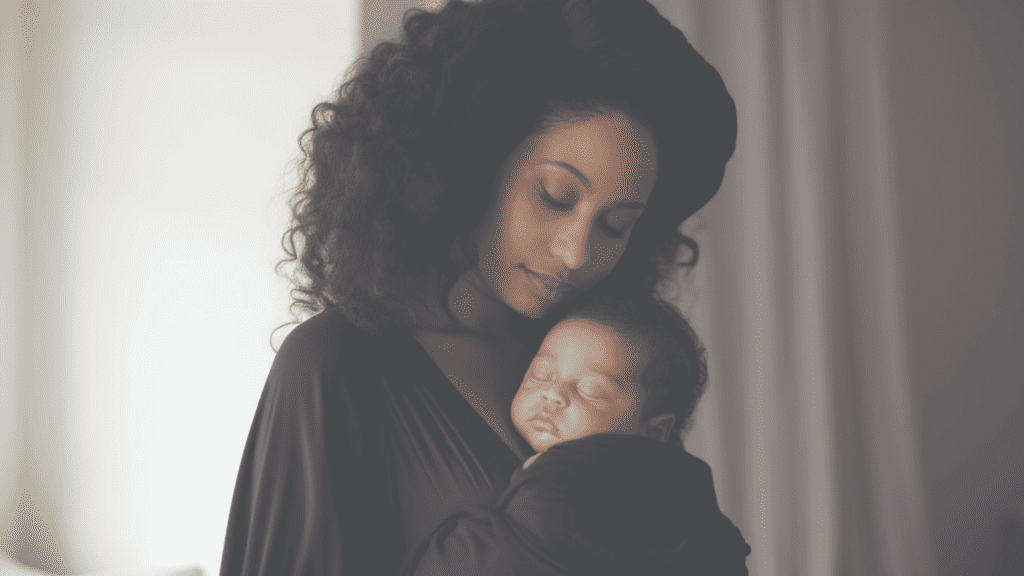
Signs Your Baby Needs to Be Burped
Recognizing signs that your baby may need to be burped is crucial. These include fussiness, squirming, and hiccups. Paying attention to these cues can help you ensure your baby’s comfort and well-being.
In this section, each of these signs will be discussed in more detail to help you identify when your baby has the need to burp and how to effectively address their needs.
Fussiness and Crying
Causes of fussiness and crying in a colicky baby include:
- Swallowing air while feeding or crying
- Feeding issues
- Food sensitivity or intolerance
- Excessive crying
- Constipation
- An immature digestive system
When a baby needs burping, they may display signs of discomfort like:
- squirming
- kicking
- shaking
- fussiness
Squirming and Arching Back
Squirming and arching their back can be a sign that your baby is uncomfortable and needs to be burped.
It’s important to note that squirming and arching their back can also be a sign of other issues, like:
- discomfort
- tiredness
- hunger
- upset
If you’re concerned about your baby’s behavior, it’s essential to observe any other symptoms and talk to a healthcare professional if necessary.
Hiccups and Spit-Up
Hiccups and spit-ups can also indicate the need for burping. Babies’ hiccups can be due to irritation of the diaphragm or too much gas in the stomach.
By recognizing these signs and helping your baby burp, you can ensure their comfort and well-being.

When to Stop Burping Your Baby
Knowing when to stop burping your baby depends on their age and cues. As your baby grows and their digestive system matures, their need for burping will decrease.
You can usually determine this based on your baby’s development and comfort levels.
This section will touch on age and how to interpret your baby’s cues to determine when to stop burping.
Age Considerations
As babies grow older, their need for burping decreases as their digestive systems mature. Generally, babies don’t need to be burped anymore between 4 to 6 months old.
This is a sign that their digestive system is maturing, and they can handle feeding without taking in too much air.
Both premature and full-term babies benefit from burping to help release trapped air after feeding. As your baby grows and develops, continue to monitor their need for burping and adjust your routine based on that.
Observing Your Baby’s Cues
Observe your baby’s cues.
Look for less fussiness and gas to help you determine if you need to continue burping.
Look for signs that your baby is more relaxed and content after feeding, pushing, or turning away from the breast or bottle or not showing signs of discomfort like fussiness or too much spit-up.
Wrapping Up
Burping a sleeping baby is essential for their comfort and your peace of mind. This article has covered the importance of burping a sleeping baby, various techniques to do it, and tips for bottle feeding and breastfeeding to minimize gas build-up.
Remember, every baby is unique, and it’s essential to learn your baby’s cues and adjust your routine accordingly.
Frequently Asked Questions
Can you still burp a sleeping baby?
It is possible to burp a sleeping baby by gently holding them upright on your shoulder and patting their back until they burp. You can also try sitting them upright on your knee while supporting their head. Make sure to move slower so as not to wake them up.
Is it OK to put baby to sleep without burping?
It is ok to put a baby to sleep without burping, as many babies do not need to be relieved of gas for improved sleep. However, some babies may sleep better by burping beforehand.
What will happen if baby is not burping?
Failing to burp a baby can lead to uncomfortable gas, reduced caloric intake, and crankiness. Burping helps expel air that babies swallow while feeding, so it’s important to be mindful of helping them do this afterward.
How long to burp a baby?
Burp your baby frequently during feedings, such as after every two to three ounces of milk for bottle feeding or each time they switch breasts for nursing. After feedings, keep them upright for 10-15 minutes or longer if needed, and rub or pat their back gently for a couple of minutes.
How often should I burp my baby during feeding?
Burp your baby frequently during feeding, such as switching sides when breastfeeding or every two to three ounces of formula.

Octavia Steen is an NBDA certified fertility doula, health coach, certified fitness nutrition specialist, aspiring missionary with the COGIC, and owner of Mother Mindset. She helps future and current mamas become more consistent in faith + fitness and grow closer to God so they can create a healthier lifestyle from the inside out!

